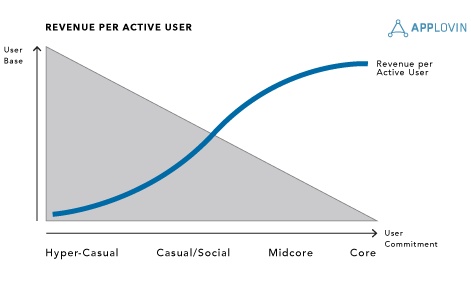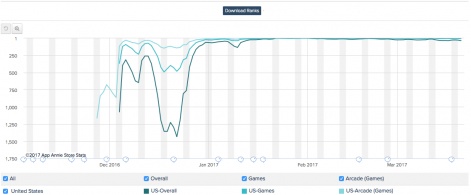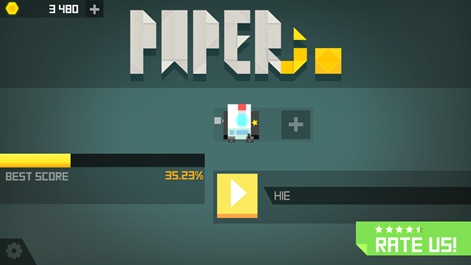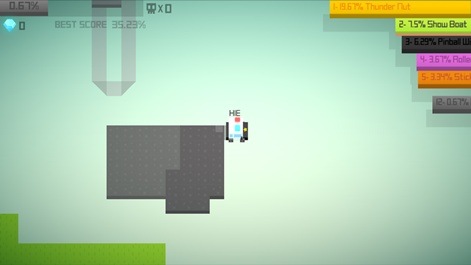Johannes Heinze is Managing Director for EMEA at AppLovin.
This article is part two of a three part series. You can read part one here and part three here.
In the past eight years since the App Store was first announced, mobile gaming has undergone a remarkable evolution, as I covered in my last post.
A couple of mobile gaming sensations have emerged that defined particular genres for mobile devices; these titles have dominated the top grossing charts for years now.
Their developers cashed in on a massive international audience that was educated to pay for virtual items through in-app purchases. Predictable and scalable mobile marketing channels helped them to have a steady influx of new users and build sustainable businesses.
In the past few years or so though, I’ve noticed a tendency of some gaming companies to leverage this history but also focus on simple but very enjoyable games that are played by millions on a daily basis -- it’s a “less is more” approach.
These games, which I think of as “hyper-casual,” have always been around, and to some extent they are a nostalgic revival of the good old arcade games that were everywhere during the 70s and 80s. But only recently have these games turned into serious business.
You tend to find them on the top of the free charts instead of top grossing (where there are only apps that make the majority of their money through IAPs). Instead they monetise primarily through ads.
Hyper-casual games are making so much money, in fact, that I think the time is right to take a closer look at them.
They’re making so much money, in fact, that I think the time is right to take a closer look at these “hyper-casual” games and highlight a couple of characteristics they have in common.
Snackable content, instantly available
Typically, hyper-casual games are played literally instantly. The apps tend to be lightweight (small file size), therefore if users discover them in the store or through an ad, they can play them within seconds. The small file size also means they are suitable for massive audiences in underdeveloped countries which are lacking in mobile infrastructure.
They open the app and are in the middle of gameplay: no loading, no level select, and no resume. Users can play as much and as often as they want, and the sessions tend to be short. The games are addictive largely because they’re always just a tap away and players can start and stop at any time.
Simple but addictive gameplay presented in a minimalistic fashion
Even if you've never played one of these hyper-casual games, you are probably familiar with the genre and gameplay -- they’re not unlike Tetris or crosswords.
They tend to appeal to a broad audience, and some social hooks or even synchronous multiplayer modes help them to go viral quickly. These games are as casual as it gets and require no commitment from the user.
From a visual standpoint hyper-casual games keep it simple, generally having a stripped down UI, bright colors and simple shapes with a retro or even minimalist design.
The relatively low revenue per active user is compensated through stickiness, scale and viral appeal.
The simplicity of hyper-casual games has an added bonus: it’s easier for them to go viral because the gameplay is so easily conveyed through screenshots and ads. At a glance, users understand the game, and reduction of that barrier goes a long way toward getting them to download and play it.
“Cas” cows
Hyper-casual games usually don't urge the user to pay for content. Instead of making most of their revenue via converting a small percentage of their user base with IAPs (usually about >70% of the revenue in other genres), they monetise their whole user base through rewarded and non-rewarded video ads with the option to pay for some nice add-ons like boosts or customisation via IAPs.
The relatively low revenue per active user is compensated through stickiness, scale and viral appeal.
Moreover, because the economies of these games lack depth, their developers can continuously pump out content that is delivered via rewarded videos and contributes to their stickiness.
A great example of this “two-for-one” strategy-income through rewarded videos, coupled with rewards that please users, can be found in Crossy Road.
Since hyper-casual games can make a lot of money nowadays and require lower investment for developers.
They have developed into a genre of their own, in a similar fashion to what midcore became for core games - see my previous post for how I define the difference between core and midcore, and hat tip to this post for helping to shape my thinking.

Case Study: Voodoo’s Paper.io
The Paris-based developer Voodoo had already seen a lot of success with its previous titles such as Quiz Run and Bool, but its title Paper.io went through the roof: It climbed to second place (App Annie) in the US Top Free overall charts.
It was the most downloaded game in the App Store two months after its initial release and managed to stay in the Top five in ‘games’ for over a month.

Paper.io in fact meets many of the criteria I listed above for hyper-casual games.
Instant
It takes less than five seconds from tapping the app logo to playing the game. Paper.io’s “play” button is very prominent on the start screen, and users jump right into the game upon tapping it.

Gameplay
The game itself is extremely simple, and like multiplayer agar.io, it pays homage to Snake, a game so successful and iconic that the Museum of Modern Art intends to add it to its collection.
The game sports a contrast-rich 8-bit style, and instead of a snake that gets longer and longer, players build a 2-dimensional grid; the goal is to capture more area than the other players.
Depending on how skilled and lucky the player is, sessions usually last between 10 and 180 seconds. When a player loses, they can start a new session within 10 seconds.

Monetisation
Paper.io has three different ways to monetise the user:
- Rewarded video to get a bonus life before starting a new game
- Skippable video and interstitials after every second or third game
- IAP purchases for getting rid of ads and customisation of the player’s “avatar”

Paper.io is a great example for a hyper-casual game, but there are more companies that follow similar patterns, e.g. Miniclip with agar.io, Bitmango with Block!, Gram Games with 1010!, Merged! and Six!, Stack by Ketchapp, and the original dots, to name a few.
In the next part of this series, we will focus on the numbers, explain how the ecosystem enables the success of hyper-casual games, and describe the inner workings of the hyper-casual business model.






















